In addition to the construction of energy infrastructure for the coal fired power generation and transmission sector, Transfield became the leading fabricator of off-shore oil and gas platforms and rigs.
Page Media:
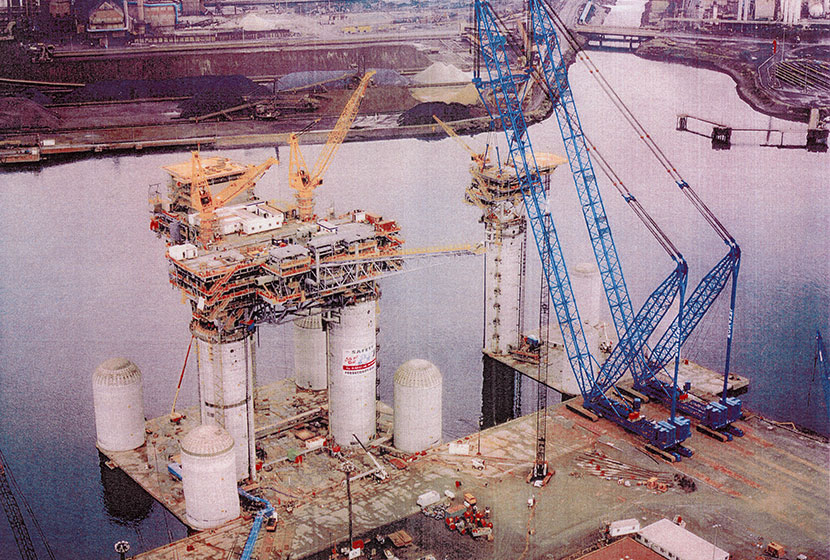
In addition to the construction of energy infrastructure for the coal fired power generation and transmission sector, Transfield became the leading fabricator of off-shore oil and gas platforms and rigs.
Page Media:
In 1965, gas was discovered in the Barracouta field, in the hostile waters of Bass Strait, south east of Victoria, and in 1967 oil was found in the Kingfish and Halibut fields. These discoveries transformed Australia's oil supply situation from one of almost complete dependence on imports to one of substantial self-sufficiency.
For more than thirty years, Bass Strait became Australia's premier oil and gas production area, supplying the nation with more than four billion barrels of oil and over four trillion cubic feet of gas.
Video: Tuna Sinking
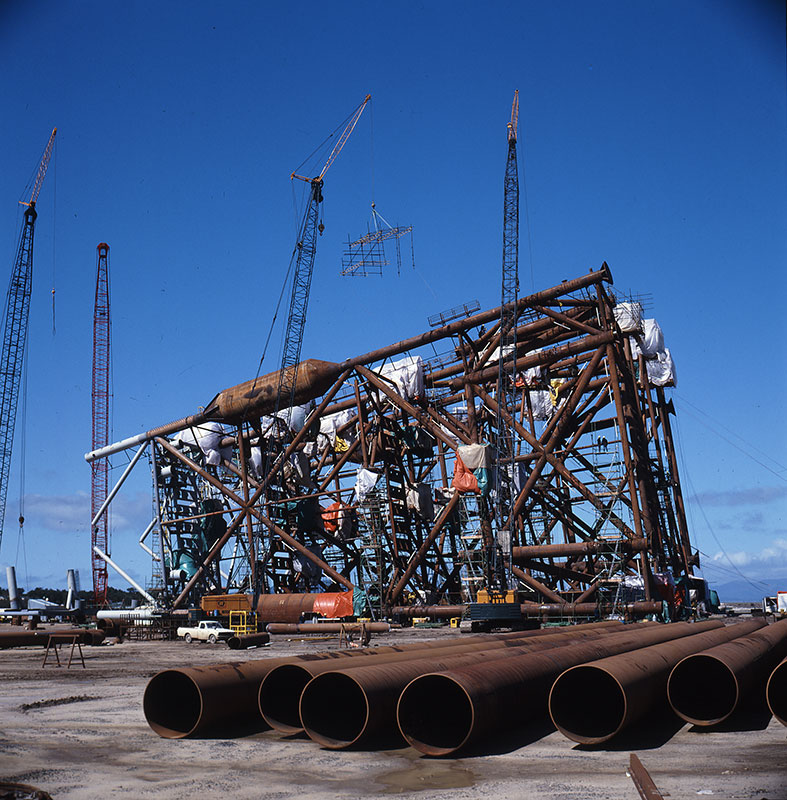
From the outset, Transfield was involved in the fabrication of submersible rigs for the extraction of oil and gas. Between 1967 and 1969, the company fabricated and assembled at Barry Beach, Victoria, five oil and gas production platforms, bearing the names of fishes, such as Halibut, Marlin, Kingfish, Barracouta and Kingfish B, built to withstand gale force winds and high seas.
Five years later, in 1974, Transfield returned to Barry Beach, to build two more platforms, but for deeper water - Tuna, 80 metres high and Mackerel, 120 metres high, the latter weighing 6700 tonnes.
Page Media:
In 1975, on another beach, 5,000 kilometres to the west, on Cockburn Sound, south of Perth, Transfield completed a giant new oil exploration rig. The Ocean Endeavour is a 20,000 tonne semi-submersible, self-propelled platform, the second of its kind ever built in Australia. The construction site was nothing more than a dredged beach allowing the completed rig to be towed out from a flooded basin.
Unfortunately, the project was plagued by industrial disputation resulting in major overruns. By the time of launching, in September 1975, oil exploration in Australia slumped and the rig was towed away to work off Tunisia. However the project won for Transfield the first of four coveted Construction Achievement Awards.
Video: Ocean Endeavour Launch.
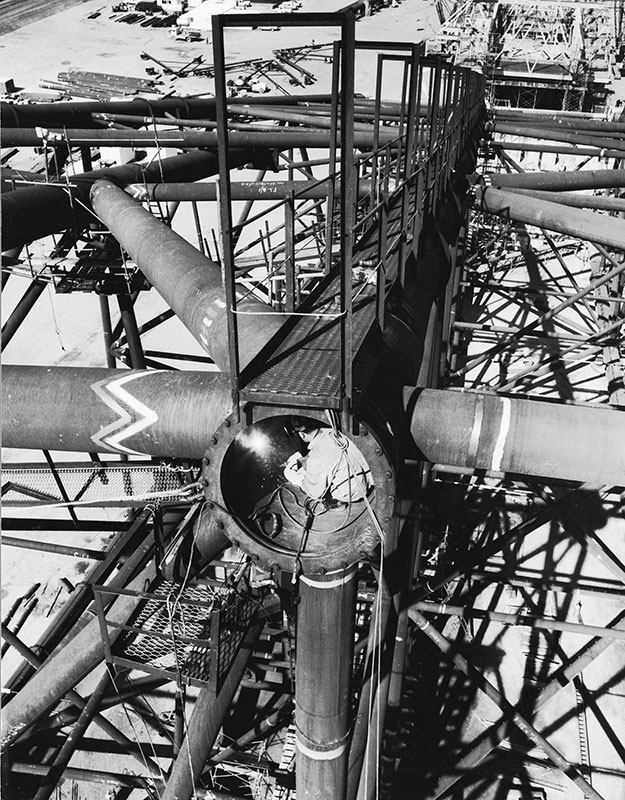
Another rig, Bream, was completed in 1987. A year later, Transfield fabricated the first unmanned and remotely operated 3200 tonne mini-platform, Whiting, to exploit the smallest oil field in Bass Strait, yet holding reserves of 21 million barrels - enough to supply Australia's total demand for about 35 years. Oil from Whiting, commissioned in 1989, was pumped 14 miles North-East to Snapper, another platform built by Transfield, before joining the main oil line to shore.
Page Media:
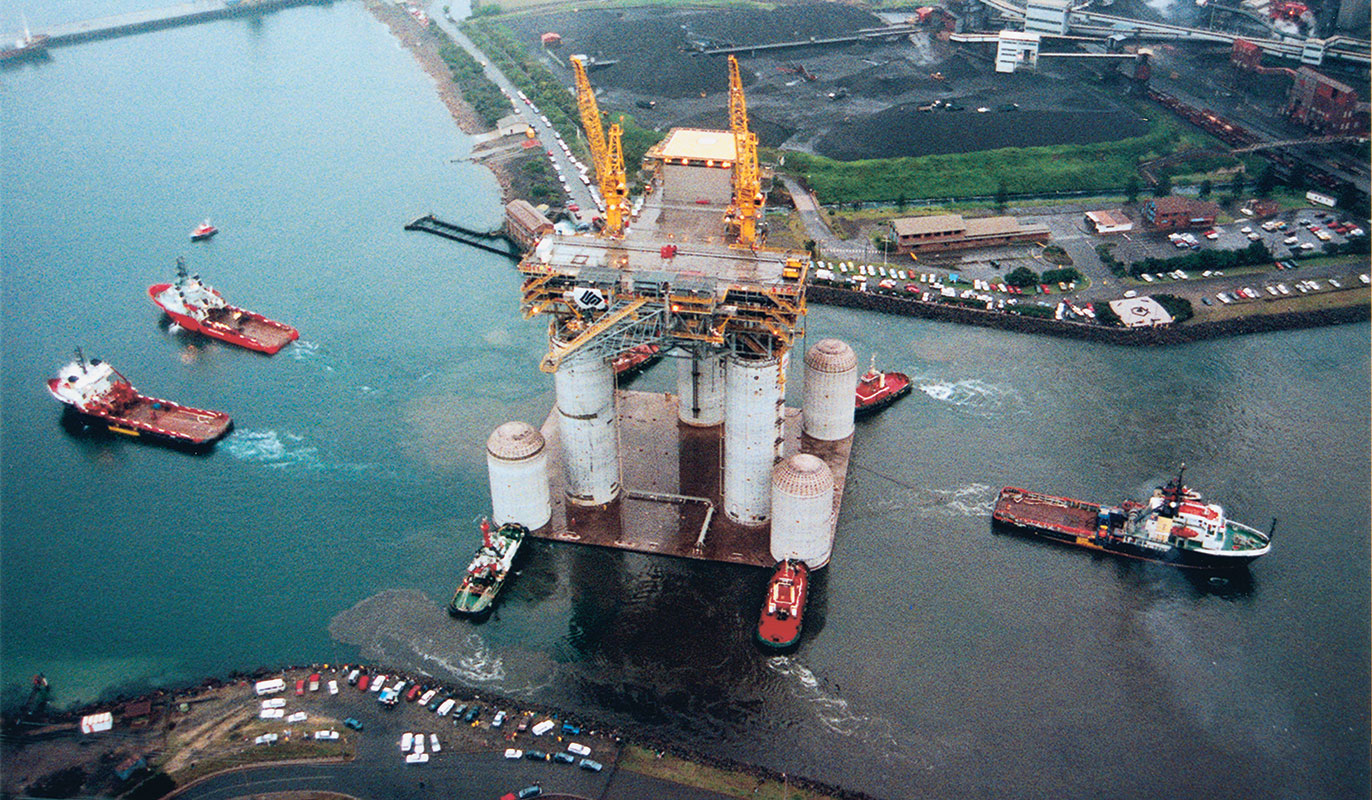
Altogether, Transfield built 14 platforms. Transfield also manufactured steel pipelines connecting five fields in Bass Strait to the mainland, which were laid by a cable reel ship.
The construction of the steel jackets, vital to Australia's self sufficiency in oil at the time, highlighted two of Transfield's particular skills - the high standard of welding required and the handling of the massive array of mobile cranes used in the assembly of sections, some up to 500 tonnes in weight. Thus, Transfield had become the leading exponent in the fabrication and assembly of offshore oil rigs employing 250 people at Barry Beach at peak periods.
Page Media:
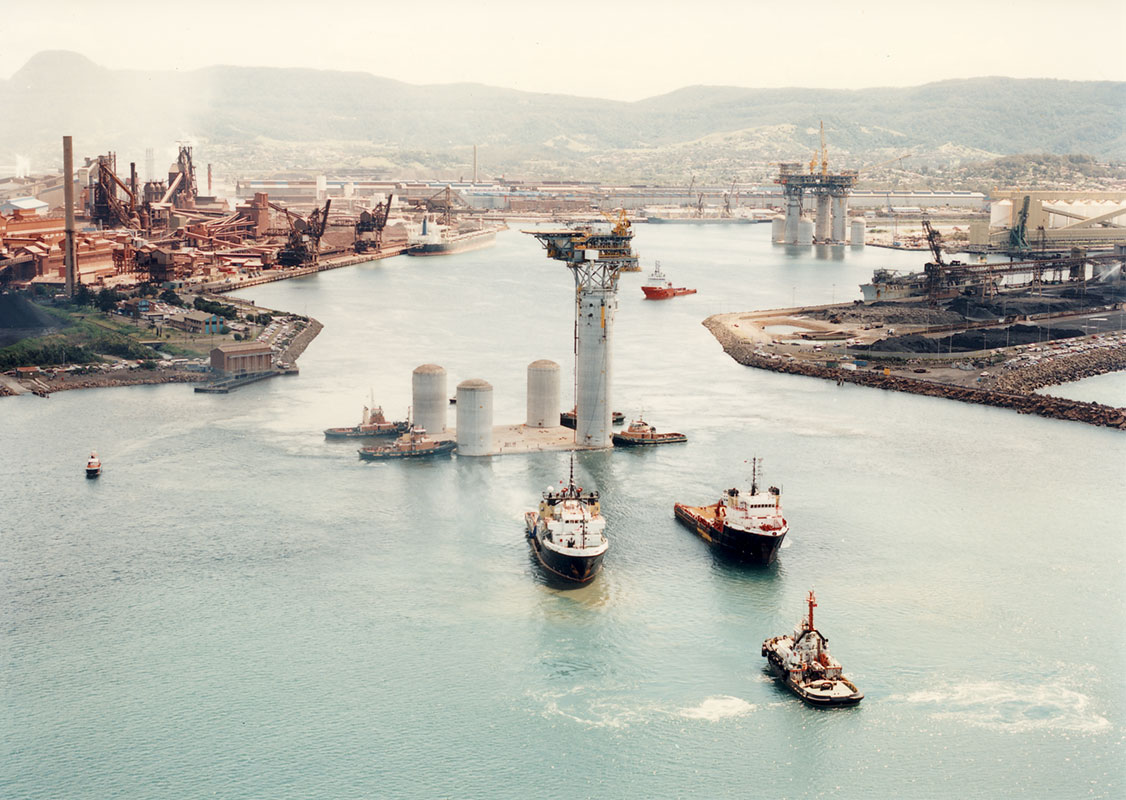
As usual, Transfield adopted imaginative work practices. Antonio Lupacchini, then a senior construction executive, remembers that "the Americans showed us how to build an oil platform (and smoke big cigars)...and we showed them how the whole exercise could be improved".
Transfield's workforce was billeted in the company hostel at nearby Welshpool. Conditions on site were harsh and windy. One of the workers recounted that "at Barry Beach it rained horizontally, 80 per cent of the time". Once, Belgiorno-Nettis, on visit to the site, quipped to a complaining unionist: "If you don't like the weather, you can just wait ten minutes and it will change". Industrial disputes affected production in Victoria as well. One leading hand admitted that "you got a strike if all the steaks didn't measure the same length".
Page Media:
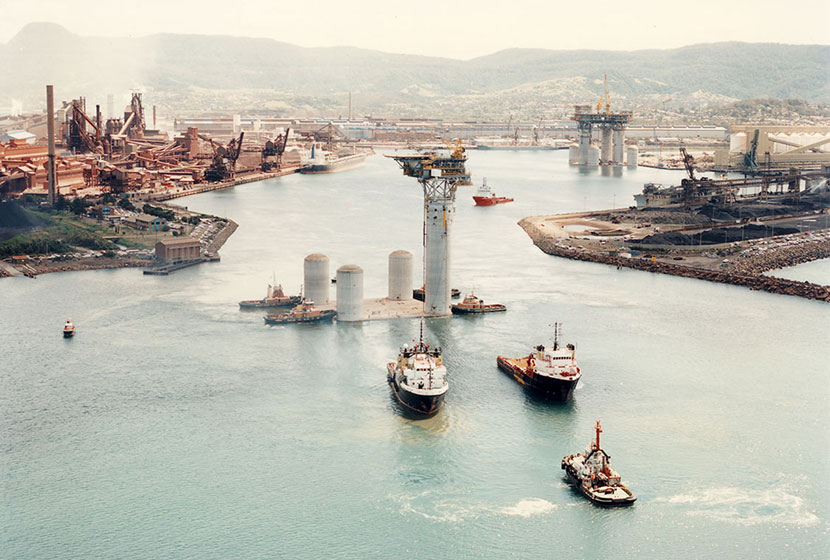
In 1996, the Company completed 2 new platforms for Bass Strait but unlike the previously built rigs, these were floating concrete drilling platforms designed to be sunk and refloated rather than permanently submersible steel jackets. Weighing about 100,000 and 45,000 tonnes respectively, these were the biggest and most complex to be built for the BHP/Esso consortium. Both rigs took three years to construct before being towed 600 kilometres by seagoing tugs from Port Kembla, NSW, to their final destination in Bass Strait.
Page Media:
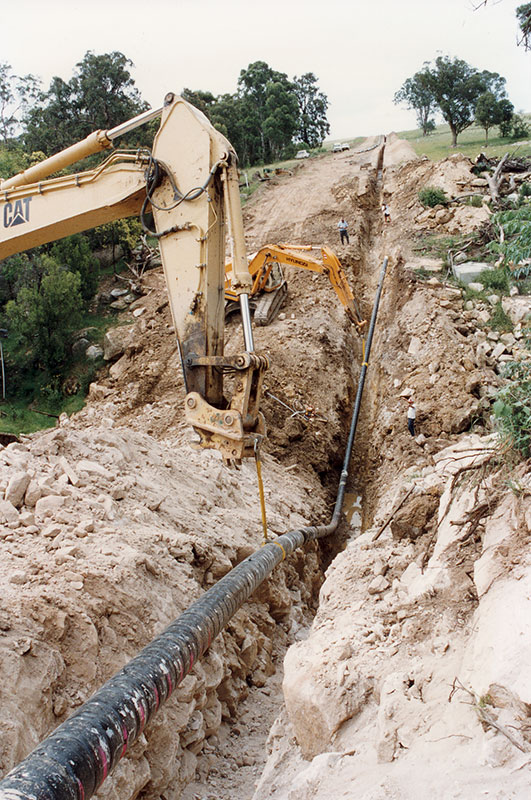
By 2000, the company had worked across outback Australia, completing pipelines for thousands of kilometres linking fields with capital cities, such as the 294 km Moomba to Sydney, the 113 km Roxby Downs, the 270 km Mereenie-Alice Springs, the 720 km Amadeus Basin pipeline in the Northern Territory, the 1,500 km North West Shelf natural gas pipeline. In 2000, Transfield in joint venture with Williams Bros. and McMahon Construction, completed the 795 km Eastern Gas Pipeline, carrying gas from Longford, Victoria, to Horsley Park, NSW.
Page Media:
Possibly the most enduring legacy of Transfield's involvement in the oil and gas industry is Australia's largest integrated services contract- awarded by Woodside Ltd. to the Transfield-Worley joint venture on the North West Shelf- the biggest gas field in the nation. Thanks to the faith of Woodside in the concept of alliancing in 1995, the contract is a benchmark for the industry. The Alliance brought together the expertise of the three parties to the design, project management and construction of the whole maintenance and sustainable capital works programme. Transfield Services Ltd. remains a party to this contract.
Video: Woodside North West Shelf Pipes.
Overview of Oil and Gas Projects
Transfield at Altona Refinery
Serventi on Transfield's oil exploration